| Tändstifts koll. |
|
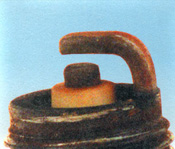
NORMAL
Symptoms: Brown to grayish-tan color and slight electrode wear. Correct heat range for engine and operating conditions.
Recommendation: When new spark plugs are installed. Replace with plugs of the same heat range
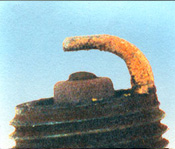
WORN
Symptoms: Rounded electrodes with a small amount of deposits on the firing end. Normal color. Causes hard starting in damp or cold weather and poor fuel economy
Recommendation: Plugs have been left in the engine too long. Replace with new plugs of the same heat range. Follow the recommended maintenance schedule
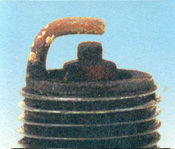
CARBON DEPOSITS
Symptoms: Dry sooty deposits indicate a rich mixture or weak ignition. Causes misfiring, hard starting and hesitation.
Recommendation: Make sure the plug has the correct heat range. Check for a clogged air filter or problem in the fuel system or engine management system. Also check for ignition system probems.
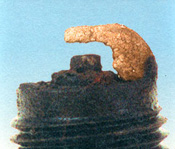
ASH DEPOSITS
Symptoms: Light brown deposits encrusted on the side or center electrodes or both. Derived from oil and/or fuel additives. Excessive amounts may mask the spark, causing misfiring and hesitation during acceleration.
Recommendation: If excessive deposits accumulate over a short time or low mileage, install new valve guide seals to prevent seepage of oil into the combustion chambers. Also try changing gasoline brands.
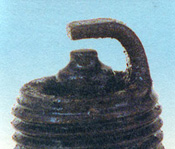
OIL DEPOSITS
Symptoms: Oily coating caused by poor oil control. Oil is leaking past worn valve guides or piston rings into the combustion chamber. Causes hard starting, misfiring and hesitation
Recommendation: Correct the mechanical condition with necessary repairs and install new plugs.
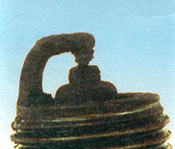
GAP BRIDGING
Symptoms: Combustion deposits lodge between the electrodes. Heavy deposits eccumulate and bridge the electrode gap. The plug ceases to fire, resulting in a dead cylinder
Recommendation: Locate the faulty plug and remove the deposits from between the electrodes.

TOO HOT
Symptoms: Blistered, white insulator, eroded electrode and absence of deposits. Results in shortened plug life
Recommendation: Check for the correct plug heat range, overadvanced ignition timming, lean fuel micture, intake manifold vacuumleaks, sticking valves and insufficient engine cooling.
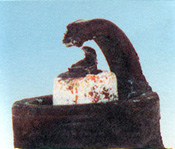
PREIGNITION
Symptoms: Melted electrodes. Insulators are white, but may be dirty due to misfiring or flying debris in the combustion chamber. Can lead to engine damage
Recommendation: Check for the correct plug heat range, overadvanced ignition timing, lean fuel mixture, insufficient engine cooling and lack of lubrication
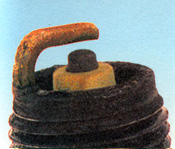
HIGH SPEED GLACING
Symptoms: Insulator has yellowish, glazed appearance. Indicates that combustion chamber temperatures have risen suddenly during hard acceleration. Normal deposits melt to form a conductive coating. Causes misfiring at high speeds.
Recommendation: Install new plugs. Consider using a colder plug if driving habits warrant.
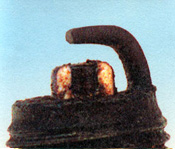
DETONATION
Symptoms: Insulators may be cracked or chipped. Improper gap setting techniques can also result in a fractured insulator tip. Can lead to piston damage.
Recommendation: Make sure the fuel anti-knock values meet engine requirements. Use care when setting the gaps on new plugs. Avoid lugging the engine.
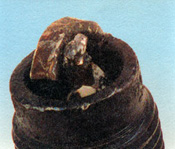
MECHANICAL DAMAGE
Symptoms: May be caused by a foreign object in the combustion chamber or the piston striking an incorrect reach (too long) plug. Causes a dead cylinder and could result in piston damage.
Recommendation: Repair the mechanical damage. Remoce the foreign object from the engine and/or install the correct reach plug.
|
|
MENY
- Home
- Gästbok / Admin
- Länkar
- Back
|

